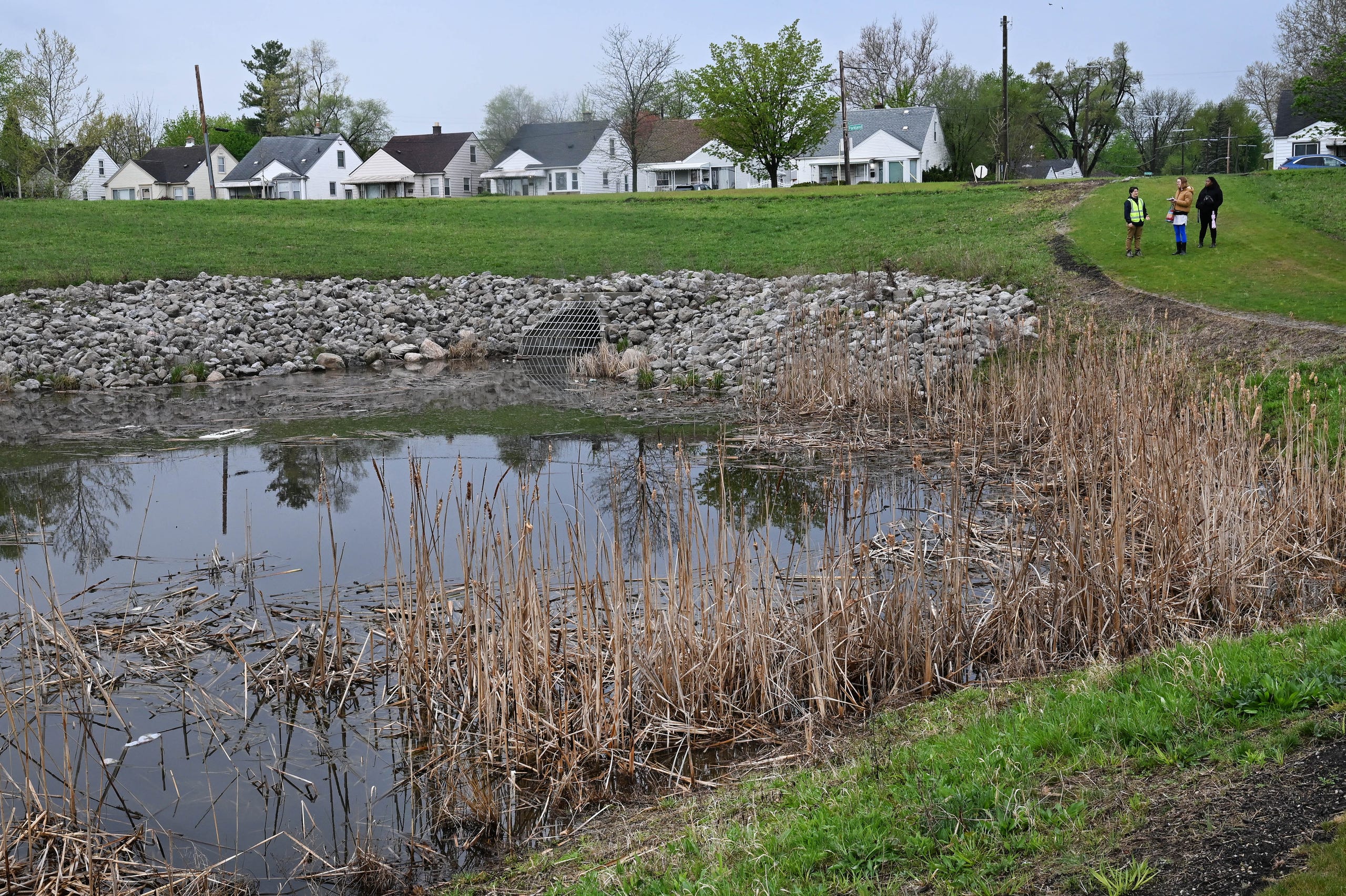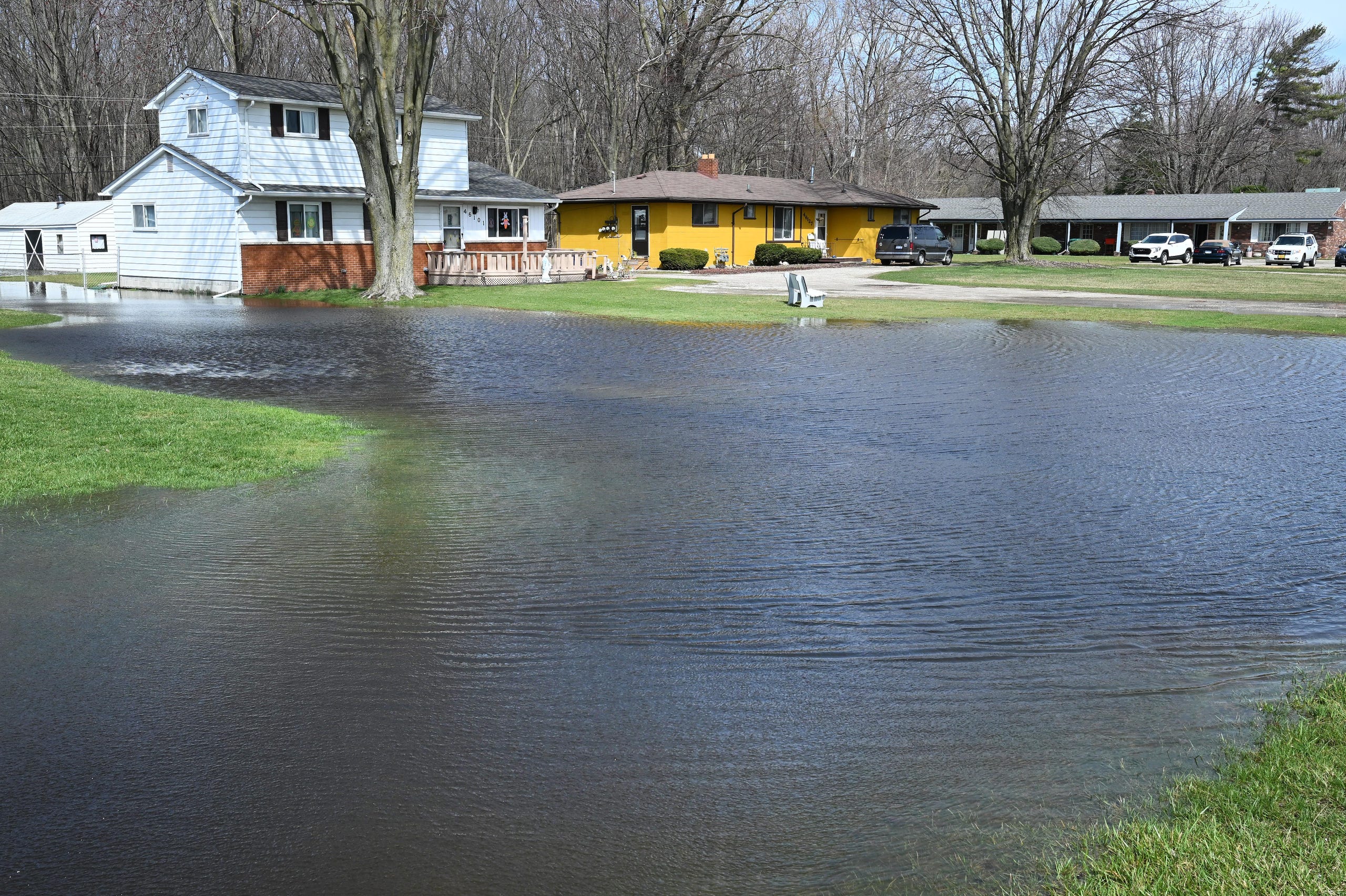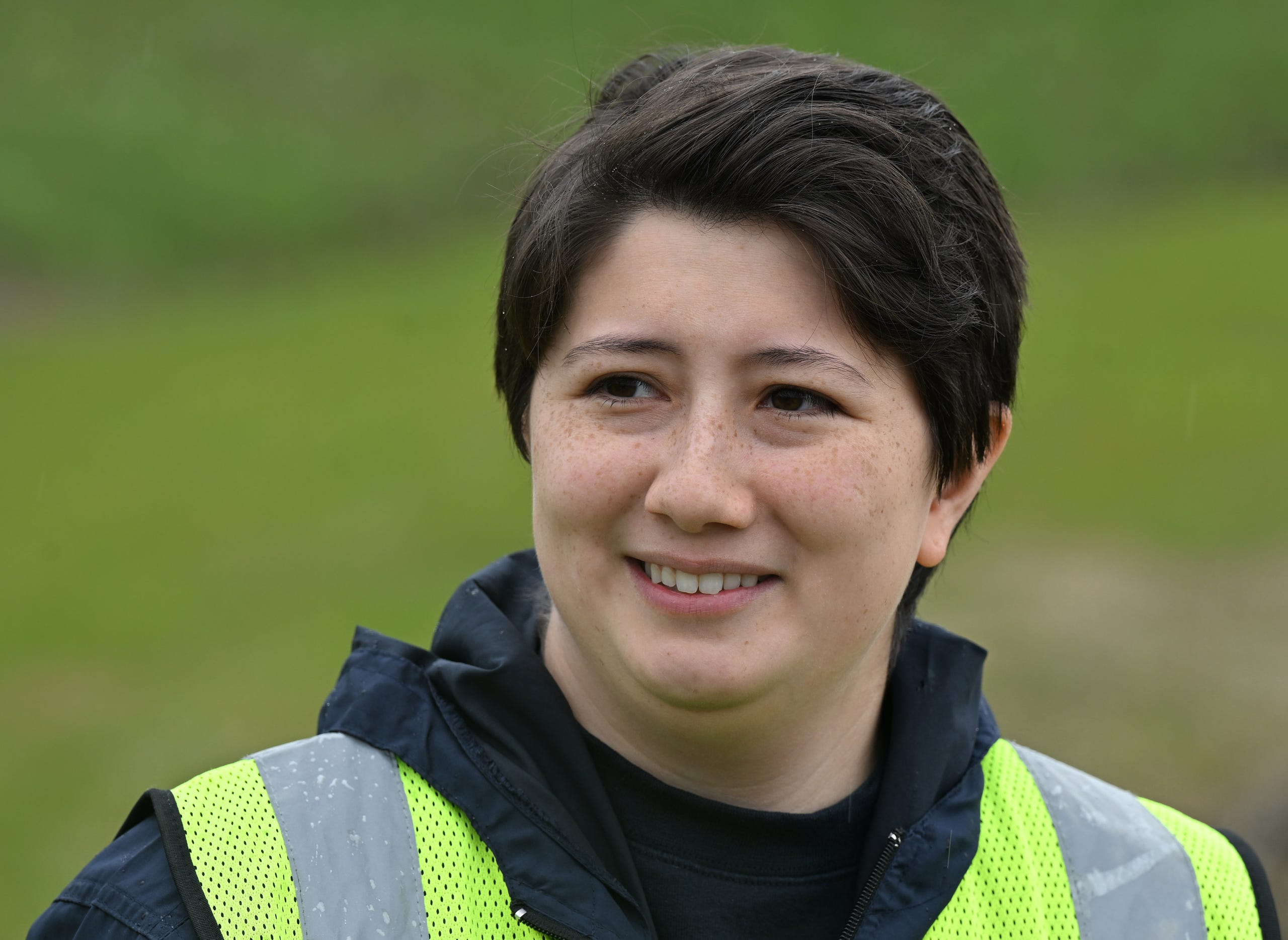Description
Heavy rains in early April flooded front yards along Jefferson Avenue in Chesterfield

Show caption
The Far West Detroit Stormwater Improvement Project on the city's west side collects stormwater from about 1,200 homes. It includes a bio-detention basin and is designed to stop combined sewer overflows, along with basement flooding.
Daniel Mears, The Detroit News
For Subscribers
Turning to nature to fight flooding: How cities are using bio-retention basins, rain gardens
Local officials say that green infrastructure projects are necessary as Metro Detroit sees more intense storms amid a warming climate.
Anne Snabes The Detroit News
Red-winged blackbirds landed on tall grasses in a pond in the Far West Detroit neighborhood on Thursday as rain lightly fell.
This body of water isn't just a pond. It's a new $40 million bio-retention basin that the city of Detroit hopes will help prevent basement flooding.
Pipes in the neighborhood collect stormwater from about 1,200 homes and send it to two basins, which temporarily store the water and filter out suspended solids. The water eventually flows into the Rouge River. City officials hope it'll reduce combined sewer overflows, or discharges of combined stormwater and wastewater, into the Rouge. The project also aims to help with flooding.
"We directly discharge that water to the Rouge River, which really frees up capacity in our combined sewer system to help … alleviate street flooding and basement backups and that sort of thing," said Lisa Wallick, Detroit Water and Sewerage Department's field services director for stormwater and permits.
As storms continue to occur more frequently and with greater intensity, the Far West Detroit Stormwater Improvement Project, which is nearly complete, is one example of how local governments across Metro Detroit have turned to more natural solutions in recent years to address stormwater and alleviate flooding.

Construction on the Far West Detroit Stormwater Improvement Project started in 2022. Water flows back into it from the Rouge River. Located north of W. … Show more
Daniel Mears, The Detroit News
Dearborn Heights — which has faced frequent flooding in some of its neighborhoods, causing headaches for homeowners and city officials alike — has purchased some flood-prone properties by Ecorse Creek and turned them into detention areas for stormwater. Royal Oak is installing rain gardens along some roads. And Macomb County replaced a major stormwater pipe with an open-air drain that soaks up rainwater.
Local officials say these projects are necessary as Metro Detroit sees more intense storms.
"This is one of those things we have to do, because climate change is going to bring ever-increasing heavy weather, and we have to make our systems resilient to that," said Jim Nash, the Oakland County water resources commissioner.
Rain gardens, swales and using properties as detention basins are examples of what's called green stormwater infrastructure, which are techniques that manage stormwater runoff by mimicking natural processes, according to Michigan State University Extension.
Officials with the Southeast Michigan Council of Governments said nature-based solutions also have recreational and economic benefits.
"It creates more green spaces that people can get out and enjoy," said Tyler Klifman, a planner at SEMCOG. "It makes our communities just better places to live, higher quality of life, more desirable for people who may be looking to locate there or visit there."
But there are some downsides. Some experts noted that these projects require a lot of maintenance, including removing invasive species and weeds.
Growth of green infrastructure
Extreme storms have become more frequent and more intense in Detroit, according to a report by Great Lakes Integrated Sciences on the impact of climate change on Detroit. Heavy rains are twice as common as they were in the 1920s, the report found, increasing the risk of flooding and sewage overflows.

Heavy rains in early April flooded front yards along Jefferson Avenue in Chesterfield. Heavy rains are now twice as common as they were in the 1920s, studies have shown. Show less
Daniel Mears, The Detroit News
Rachael Barlock, a water resources engineer for SEMCOG, said her organization has been working on a regional flooding and infrastructure resilience plan, which started earlier this year and is expected to last two years.
As part of that plan, SEMCOG is completing a nature-based solutions desktop assessment. SEMCOG is working with a consultant to use computer modeling to identify locations where governments can implement large, nature-based solutions to address flooding.
She said that historically, communities have implemented smaller-scale green infrastructure with the goal of improving the water quality of streams and lakes. One example would be rain gardens, which are depressed areas that collect rainwater from a roof or street and filter out pollutants, according to the Environmental Protection Agency.
But now, SEMCOG wants to implement large-scale nature-based solutions that could address flooding, not just water quality.
“So the first step of that is we're doing this desktop assessment to identify any areas that we could potentially store water during those heavy rain events and keep it away from property and roads so that it's not impacting the residents,” Barlock said.
Barlock said the terms "green stormwater infrastructure" and "nature-based solutions" can be interchangeable, but they have slightly different meanings. She said green stormwater infrastructure often has both constructed elements and natural elements. Many rain gardens, for example, have constructed pipes. "Nature-based solutions" refers to efforts such as expanding wetlands or increasing tree canopy, which involve natural systems.
Nash, the Oakland County water resources commissioner, said his office has been hosting annual stormwater summits since he was first elected in 2012. Lecturers from around the region and state talk at the event. He said when the first summit occurred in 2013, green infrastructure was "all theoretical," and they were learning about projects in "distant lands."
But over the following years, local governments started asking how they could install green infrastructure and maintain it.
In Pontiac, Nash's office is finishing a $1.3 million project in which stormwater will enter rain gardens instead of going into a storm drain. He said this project and two others in Pontiac are "demonstration projects" meant to show local governments how green infrastructure can be done.
"More and more communities are doing this," he said.
Nash said that last year, the Water Resources Commissioner's office launched a RainSmart Rebates program in which it offers rebates of up to $2,000 for homeowners to put green infrastructure on their properties, including installing rain barrels, planting trees and adding a rain garden.
RainSmart Rebates is a two-year pilot program, and the office is waiting to hear back from the Environmental Protection Agency on whether it will receive a grant that will help it continue. However, Nash said his office is currently concerned about EPA grants, as the agency has faced cuts and layoffs under the new Trump administration.
Detroit builds bio-retention areas
Birds chirp as the rain falls at the Far West Detroit Stormwater Stormwater Retention Project, which almost looks like a park north of W. Warren Avenue and west of Outer Drive, not far from Dearborn Heights. At the bottom of the depressed area are two ponds connected by a short channel.
The project, which officials broke ground on in 2022, can hold up to 100 million gallons of stormwater per year.
Officials say one challenge with infiltration in the region is the dense clay soil.
Anna Timmis, an engineer with the Detroit Water and Sewerage Department, said that when crews were building the basins for the project, they had to dig deep into the ground and put in some topsoil, which is better at absorbing water than clay soil.
"Most of the city, and really a lot of the region, has pretty dense clay soils, so those are pretty horrible for infiltration," she said.

Anna Timmis, engineer with the Detroit Water and Sewage Department, looks on at the Far West Detroit Stormwater Improvement Project. Local governments across Metro Detroit … Show more
Daniel Mears, The Detroit News
The city also put native plants in the ponds, and they take up water as well.
The Detroit Stormwater Hub has tracked green infrastructure projects in the city since 2018. Detroit has had 292 projects, most of which were conducted by private property owners. That number also includes 19 projects that DWSD has undertaken since 2015.
"Green stormwater infrastructure is a more resilient, affordable way of managing the stormwater and a natural way of managing the stormwater," Wallick said.
The city also has combined sewer overflow facilities, which are considered "gray infrastructure." They're large concrete tanks that treat a mix of stormwater and wastewater, and they're more expensive than green infrastructure, Wallick said.
She said one challenge of nature-based solutions is getting them established. She said cities have to "pay attention to their maintenance."
"You need to make sure you're removing invasive species, you need to make sure that you're removing weeds and keeping everything pruned ― it doesn't get out of control," she said.
Dearborn Heights implements solutions
Dearborn Heights Mayor Bill Bazzi, meanwhile, said his city has purchased several dozen homes along Ecorse Creek and torn them down. He said there's "still a lot more that we need to purchase." He noted that these vacant lots can flood during a storm and absorb rainwater, similar to a rain garden.
"It'd be like a … natural-retention detention area for the water," he said.
Mohamed Moghnie, who lives on Currier Street, which runs along the Ecorse Creek in Dearborn Heights, said water has backed up into his basement at least five times since he moved into his home 20 years ago. He said he thinks the city buying up properties will help with the flooding issues in his area. A property near his own was sold to the city and is now a vacant lot.
"I know they bought a lot of houses ― they knock it down ― so now they have more room for the water," he said. "But I feel like they do need to buy more houses."
He said cities coming up with natural solutions to handle stormwater is "a great idea."
"Any solution is a good idea, you know," he said.
asnabes@detroitnews.com
Help us provide more detailed information about this project by
contributing!